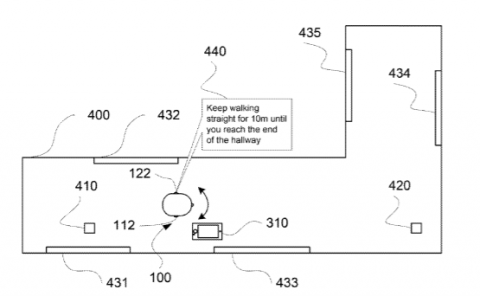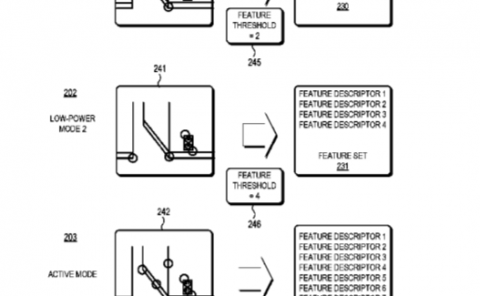Google Patent | Non-Planar Computational Displays
Patent: Non-Planar Computational Displays
Publication Number: 20190020869
Publication Date: 2019-01-17
Applicants: Google

Abstract
A near-eye display system includes one or more non-planar display panels and a lenslet array to display a near-eye lightfield frame. The near-eye display system further includes a rendering component to render, based on a stereoscopic focus volume associated with a set of display geometry data of the one-or more non-planar display panels, the array of elemental images in the near-eye lightfield frame such that objects within the stereoscopic focus volume are perceived to be in focus by the user’s eye. A method of operation of the near-eye display system includes receiving display geometry data for one or more non-planar display panels of the near-eye display system and rendering, based on a stereoscopic focus volume, an array of elemental images at a position within a near-eye lightfield frame such that the non-planar display panels presents objects within the stereoscopic focus volume to be in focus.
Background
Immersive virtual reality (VR) and augmented reality (AR) systems typically utilize head-mounted displays (HMDs) and other near-eye display systems to present stereoscopic imagery to the user so as to give a sense of presence in a three-dimensional (3D) scene. Conventional HMDs can utilize a near-eye lightfield display or other computational display to provide display of three-dimensional (3D) graphics. Generally, the near-eye lightfield display employs one or more display panels and a number of lenses, pinholes, or other optical elements that overlie the one or more display panels. A rendering system renders an array of elemental images, with each elemental image representing an image or view of an object or scene from a corresponding perspective or virtual camera position.



